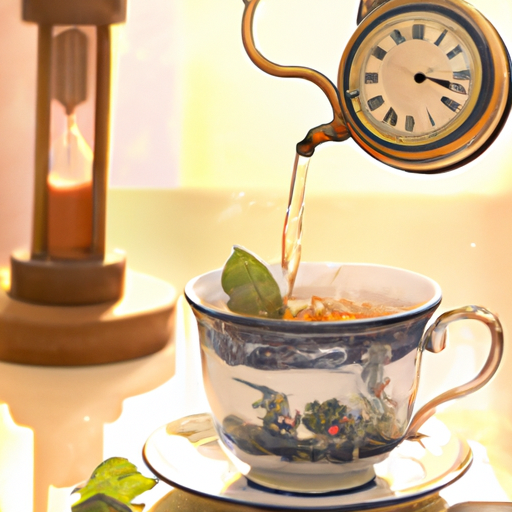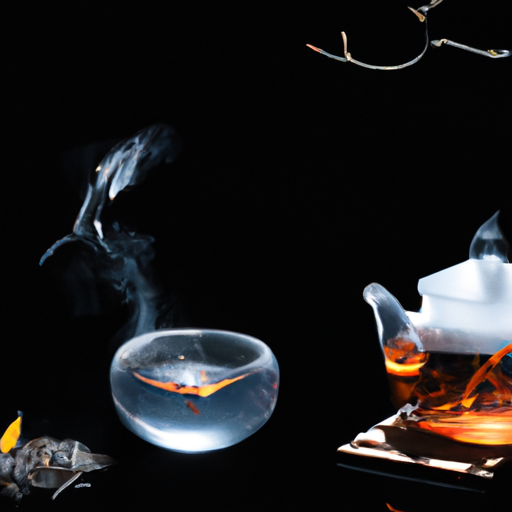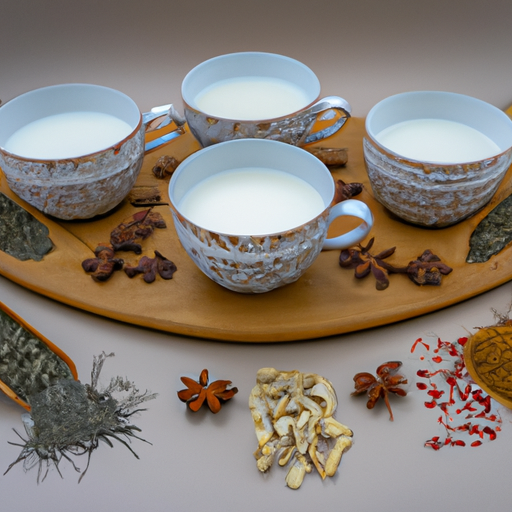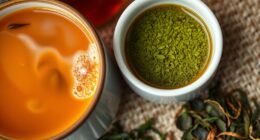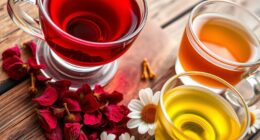Do you realize that more than 80% of tea enthusiasts enjoy their tea hot? However, what if I shared with you a method to make tea that is equally delicious, if not more so, when it’s cold?
Enter cold steeping tea, also known as cold brew tea. This technique has been gaining popularity for its ability to create a lighter-bodied, less bitter, and more refreshing tea.
When you cold steep tea, you’re able to extract the flavors without the risk of over steeping and creating a bitter taste. It’s a forgiving method that allows you to enjoy the true essence of the tea leaves.
Plus, cold steeped tea can last throughout the week in your fridge, making it a convenient option for tea lovers on the go.
In this article, I’ll guide you through the cold steeping process, sharing tips and variations along the way. Get ready to discover a whole new world of tea flavors that will keep you cool and refreshed all summer long.
Key Takeaways
- Cold steeping tea results in a lighter-bodied tea with less astringency and bitterness.
- Cold steeping is more forgiving and reduces the risk of over steeping.
- Cold brew tea can last throughout the week in the fridge.
- Cold steeping tea is a refreshing way to enjoy tea without the need for hot water.
What is it?
I already know that cold steeping tea, also known as cold brew tea, is a method that uses cold water instead of hot water to make a lighter-bodied and less bitter tea. When it comes to cold steeping, different types of teas can be used. Green teas, for example, can be steeped with cold water to reduce bitterness. On the other hand, black teas can also be cold steeped to create a smoother and less astringent flavor profile.
When comparing cold steeping to hot steeping, there are some notable differences. Cold steeping is more forgiving and reduces the risk of over steeping, resulting in a milder and less bitter taste. It also allows for the extraction of different flavor compounds, resulting in a unique and refreshing tea experience. Additionally, cold steeping can be a great option for those who find hot brewed teas too bitter or astringent.
Overall, cold steeping offers a different way to enjoy tea, with its lighter body and reduced bitterness.
Benefits and Flavor Profile
One fascinating fact to consider is that cold brewing results in a lighter-bodied and less bitter flavor profile compared to traditional hot brewing methods. The process of cold steeping tea eliminates the need for hot water, which can often result in a more astringent and bitter taste. Cold steeping is a gentler method that extracts the flavors from the tea leaves without releasing as much tannin, resulting in a smoother and more delicate taste.
Here are three reasons why cold steeping stands out compared to hot steeping and iced tea:
-
Cold steeping vs hot steeping: Cold steeping allows for a longer and slower extraction process, resulting in a more nuanced and subtle flavor profile. It also reduces the risk of over steeping, making it a forgiving method for those who may be new to brewing tea.
-
Cold steeping vs iced tea: While both cold steeping and iced tea involve using cold water, cold steeping requires a longer steeping time and yields a more concentrated flavor. This makes it a great option for those who prefer a stronger and more flavorful iced tea.
-
Cold steeping offers a lighter-bodied and less bitter flavor profile compared to hot brewing, making it a refreshing and enjoyable way to enjoy tea without the need for hot water.
Cold Steeping Process
To begin the cold steeping process, gather a pitcher or jar, loose-leaf tea, and room temperature or cold water. Cold steeping offers a unique flavor profile compared to hot steeping. The resulting tea is lighter-bodied, less bitter, and has a smoother taste. It allows the delicate flavors of the tea to shine through without the risk of over steeping.
One of the great things about cold steeping is the opportunity to explore different flavor combinations. You can experiment with adding fruits, herbs, or spices to enhance the taste of your tea. Some popular combinations include lemon and ginger, raspberry and mint, or peach and lavender. The possibilities are endless!
Cold steeping is a wonderful method to create refreshing and flavorful iced tea, perfect for hot summer days.
Tips and Variations
For a unique twist on your cold steeping experience, try experimenting with different types of fruits, herbs, or spices to create exciting flavor combinations.
Cold brewing is not limited to just tea leaves, you can infuse your cold steep with a wide variety of ingredients. For example, you can add fresh slices of citrus fruits like lemon or orange to give your cold brew a refreshing tang. You can also try adding herbs like mint or basil for a hint of herbal freshness. Spices like cinnamon or ginger can add warmth and depth to your cold steep.
The possibilities are endless when it comes to flavor combinations, so don’t be afraid to get creative and discover new and exciting taste profiles.
Frequently Asked Questions
How does cold steeping tea affect the caffeine content?
Cold steeping tea can result in a lower caffeine content compared to hot steeping. This is because cold water extracts less caffeine from the tea leaves. Cold steeping also offers the benefits of a milder flavor and is gentle on sensitive stomachs.
Can cold steeped tea be reheated?
Yes, cold steeped tea can be reheated. However, it may result in a change in flavor and potentially a loss of some of the benefits of cold steeping, such as a lighter-bodied and less bitter taste.
What is the recommended ratio of tea leaves to water for cold steeping?
The recommended ratio of tea leaves to water for cold steeping depends on personal preference, but a general guideline is 2 teaspoons of tea leaves to 8 ounces of water. Cold steeping offers the benefits of a lighter-bodied and less bitter flavor profile.
Can cold steeped tea be sweetened with honey or other sweeteners?
Yes, cold steeped tea can definitely be sweetened with honey or other sweeteners. It adds a delightful natural sweetness to the tea, enhancing its flavor. Try experimenting with different amounts of honey to find your perfect balance. Enjoy!
Is it necessary to use loose-leaf tea for cold steeping, or can tea bags be used as well?
Using tea bags for cold steeping is convenient but may result in a weaker flavor. Pros of using loose leaf tea include more flavor options and the ability to make your own blends. Cons include the need for a strainer.


